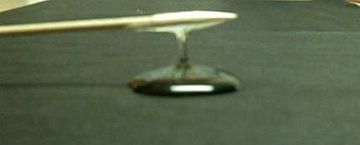Glucose syrup facts for kids
Glucose syrup is a sweet, thick liquid, also known as confectioner's glucose. It's made from starch, often from maize (corn) in the US. When made from corn, it's called "corn syrup". It can also come from potatoes, wheat, barley, rice, or cassava.
To make it, starch is broken down in a process called hydrolysis. This turns the starch into glucose, which is a type of sugar. Glucose syrup is used in many foods to make them sweet, soft, and add volume.
Some glucose syrups have a lot of pure glucose, over 90%. These are used in factories to help make other products. Syrups for confectionery (like candy) have different amounts of glucose, maltose, and other sugars. They usually contain 10% to 43% glucose.
A scientist named Gottlieb Kirchhoff first made glucose syrup in Russia in 1811. He used heat and a strong acid called sulfuric acid.
Contents
What Are the Types of Glucose Syrup?
Glucose syrups come in different types. These types depend on how the starch is broken down and how much it's broken down. Each type has different features and uses.
Syrups are often grouped by their dextrose equivalent (DE). This number tells you how much the starch has been broken into smaller sugars. A higher DE means more sugars like glucose are present. Even with the same DE, syrups can have different sugar mixes and properties.
Confectioner's Syrup
The first glucose syrups were made by using acid on corn starch with high heat and pressure. The usual syrup made this way had a DE of 42. It was sometimes hard to control the quality. Syrups with higher DE made by acid could taste a bit bitter and look dark. This was due to other things forming during the process.
Today, this type of syrup is still made using a continuous process. It's popular because making it with acid is cheap. A typical confectioner's syrup has about 19% glucose and 14% maltose. It also has other larger sugar molecules. A 42 DE syrup is about half as sweet as regular sugar. If the DE goes up, the sweetness also increases. For example, a 63 DE syrup is about 70% as sweet as sugar.
High-Maltose Syrups
Special enzymes can be used to make glucose syrups with a lot of maltose. Some can have over 50% maltose, and "extra-high-maltose" syrups can have over 70%. This happens because these enzymes remove two glucose units at a time from the starch.
High-maltose glucose syrup is great for making hard candy. A maltose solution is less thick than a glucose solution at the same moisture and temperature. But it still sets into a hard candy. Maltose also doesn't absorb moisture from the air as much as glucose. This means candy made with high-maltose syrup won't get sticky as easily.
How Is Glucose Syrup Made?
No matter what plant material is used or how the starch is broken down, some steps are always the same.
Getting the Starch Ready
First, the starch must be separated from the plant material. This means removing things like fiber and protein. Protein can cause bad tastes and colors. Fiber is insoluble and needs to be removed so the starch can mix with water. The plant material also needs to be ground up. This helps the starch mix with water.
Soaking the Starch
The starch needs to swell up. This allows the enzymes or acid to work on it. If grain is used, sulfur dioxide is added. This stops it from spoiling.
Making It Gel
The ground and cleaned plant material is heated. This causes starch gelatinization. The bonds in the starch molecules break down. This lets them take in more water. The starch granule dissolves. The starch chains start to separate. This prepares the starch for the next step, which is breaking it down.
Breaking Down the Starch (Hydrolysis)
Glucose syrup can be made by using acid, enzymes, or both.
In the past, glucose syrup was only made by mixing corn starch with hydrochloric acid. Then, the mixture was heated under pressure. Today, it's mostly made using enzymes. First, the enzyme α-amylase is added to corn starch and water. This enzyme comes from certain bacteria. It breaks the starch into smaller sugar chains.
Next, another enzyme called glucoamylase is added. This enzyme comes from certain fungi. It breaks the smaller sugar chains into individual glucose molecules. Sometimes, this glucose can then be changed into fructose. This is done by passing the glucose through a special column with the enzyme D-xylose isomerase.
Cleaning the Syrup
After the starch is broken down, the thin syrup is cleaned. It can be passed through special columns. This removes things that make it cloudy or unstable. This makes the syrup clearer and more stable.
Making It Thicker
Finally, the thin glucose syrup is heated in a vacuum. This makes the water evaporate. The syrup becomes thicker and more concentrated.
What Is Glucose Syrup Used For?
Glucose syrup is used in many foods. It works as a thickener, a sweetener, and a humectant. A humectant is something that keeps food moist and fresh. Glucose syrup is also widely used to make different kinds of candy.
In the United States, corn syrup and high fructose corn syrup (HFCS) are often used. They are found in many processed foods, candies, and drinks. This helps companies save money.
Before HFCS became very popular, glucose syrup was the main corn sweetener in the US. HFCS is made by changing some glucose into fructose using enzymes. This makes the syrup sweeter and easier to dissolve. You can also buy corn syrup in stores for home use.
Glucose syrup is sometimes used to make fake blood for movies and TV shows. It's popular for independent films because it's cheap and easy to get.
See also
 In Spanish: Almíbar para niños
In Spanish: Almíbar para niños


